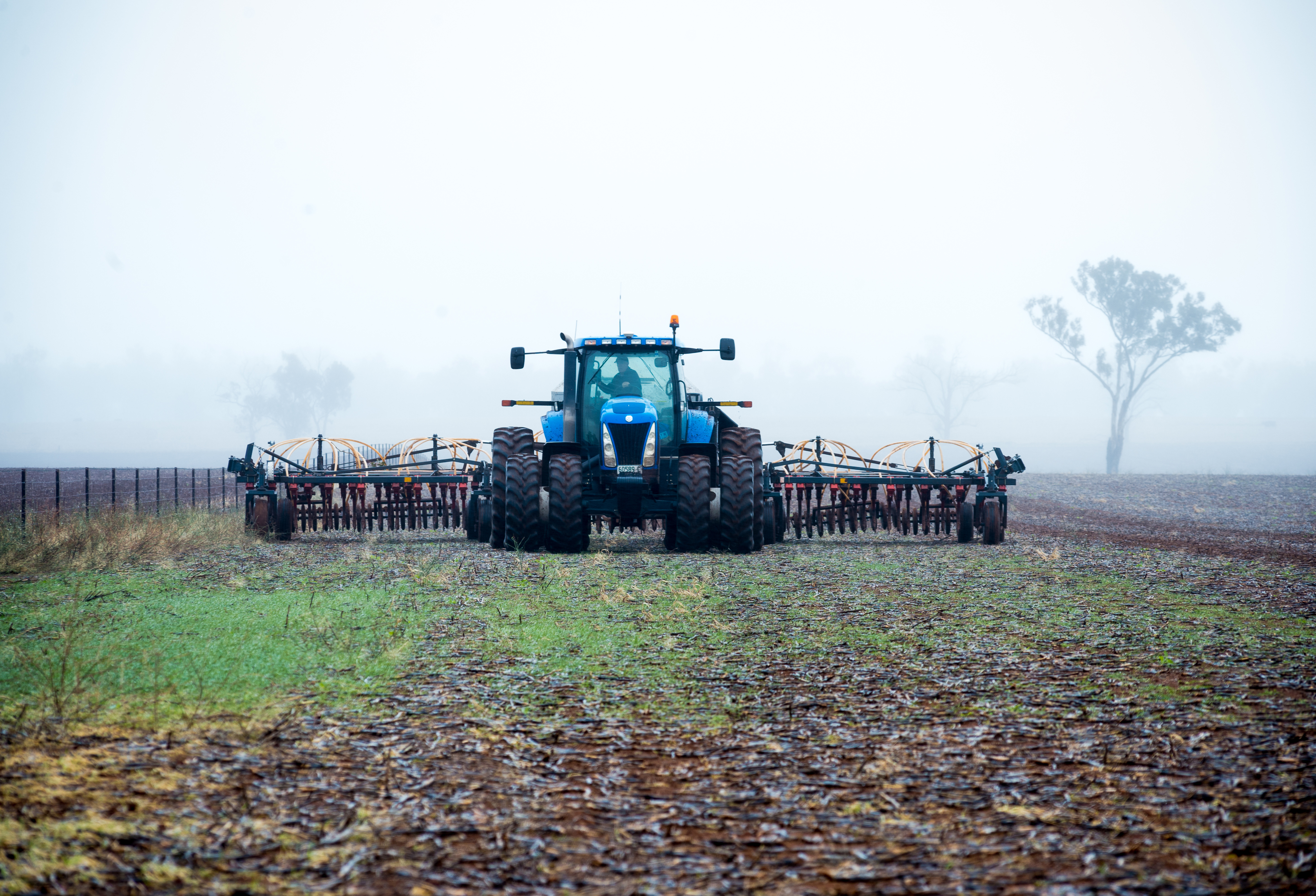Growers in the high-rainfall zone (HRZ) of south-eastern Australia planning to sow into a full moisture profile are reminded to match their varieties' sowing date to the optimal flowering period in order to mitigate frost risk later in the season.
Early sowing is a tactic used when a moist seedbed exists before the traditional sowing time around Anzac Day in April or early May.
According to the GRDC's Ten Tips for Early Sown Wheat, the crops best suited to this approach are feed grains and dual-purpose crops such as winter wheat, and winter canola.
Winter wheats have a strong vernalisation requirement (cool temperatures between -1 to 16°C for a total of four to eight weeks) for the plant to progress from vegetative growth to reproductive growth stages. In contrast, the development of other wheat cultivars used in Australia is largely determined by thermal time (temperature).
Strategic paddock selection is also encouraged when sowing early to ensure weeds are well controlled as weeds, pests and diseases can easily thrive in these conditions.
GRDC Southern Region Panel member and agricultural consultant Jon Midwood says sowing rate should also be adjusted as crops sown early into wet soil are able to germinate almost immediately and tiller for longer than usual.
"A crop sown at the end of March will be in a vegetative stage of growth for longer than usual. If growers are sowing at the same rate as they would for late April or May-sown crops then there could be increased potential for disease as well as lodging and harvesting issues later in the season," he says.

Trafficability
Waterlogging is likely to be an issue for HRZ growers with a full moisture profile in autumn.
Mr Midwood says damage to soil structure from machinery getting bogged in wet ground is a 'hidden cost' that could impact future crops.
"Filling in holes caused by bogged machinery could cosmetically fix the problem, but the disturbance to soil layers has the potential to affect crop growth into the future," he says.
"Strategically sowing accessible paddocks and adjusting where crops are being sown will allow growers to get their crop in the ground if conditions stay wet."
Growers using controlled traffic farming (CTF) practices, where designated compacted wheel tracks are used, can be an advantage in wet sowing scenarios.
CTF restricts all heavy machinery wheels to permanent traffic lanes where compaction is beneficial for paddock access. However, CTF adoption requires autosteer and a planned machinery replacement and/or modification program to convert equipment to full CTF dimensions over a period of years.
The GRDC Controlled Traffic Farming Fact Sheet outlines a number of positive outcomes for growers considering adopting a CTF system.
Pest, disease and weed management
Sowing early in ongoing wet conditions requires prudent weed and volunteer control to reduce any carryover disease burden.
Mr Midwood says sowing often prompts germination of weed seeds and if a crop was being sown into a paddock with a high weed burden then there would be a lot of pressure on a young crop to adequately compete with the weeds.
"Growers need to strategically choose their paddocks for early sowing and ensure they have had some kind of weed germination and chemical controls before putting a crop in, otherwise they will struggle to get on top of the weeds," he says.
Growers who have kept summer fallows free of weeds and volunteers that diseases can survive on will have best results when sowing early. The GRDC Green Bridge Fact Sheet recommends eliminating host plants no less than four weeks before seeding. This will help address issues such as:
- Cereal rusts and soil-borne diseases – Various rusts and soil-borne diseases can persist and even increase in the presence of a green bridge. Crop rotation can help manage the problem and risk can be diagnosed by undertaking PREDICTA® B DNA-based soil tests.
- Viruses - Wheat streak mosaic virus, barley yellow dwarf virus, cereal yellow dwarf virus, turnip yellows virus (formerly beet western yellows virus) and bean leaf roll virus are viral diseases of note spread by insect vectors.
- Pests – Slugs, diamondback moth, Russian wheat aphid, webworm, cutworm, armyworm, flea beetle, lucerne flea and a range of other pests use plants and stubble as food, moisture and shelter sources over summer.
Chemical control to manage weeds can be by pre or post-emergent herbicides, but as resistance issues increase, growers are encouraged to use a range of control options. A double-knock strategy is a good option for early autumn weed control, especially for hard-to-kill weeds.
The double-knock is a sequential application of two different control tactics within a relatively short period. It usually involves glyphosate followed by paraquat, paraquat/diquat or glyphosate plus an effective alternative herbicide at full label rate in the first application and a robust rate of paraquat in the second application.
Nutrient management
Growers who harvested high-yielding crops in 2020-21 will need to allow for additional nutrient requirements this year.
Mr Midwood says the 'legacy' of the previous season needs to be considered to ensure appropriate replacement nutrition is applied.
"However, with some fertiliser shortages in Australia, this will need some forward planning," he says.
"If a grower budgeted for nutrient replacement from a five-tonne per hectare wheat crop but instead harvested 7 or 8t/ha crops then they will need to allow for that within their nutrient inputs," Mr Midwood said.
"The soil nutrient bucket could be a little empty this year and if growers sow early and have a crop germinate straight away, nutrient deficiency could be an ongoing issue."
Useful resources:
GRDC Controlled Traffic Farming Fact Sheet






